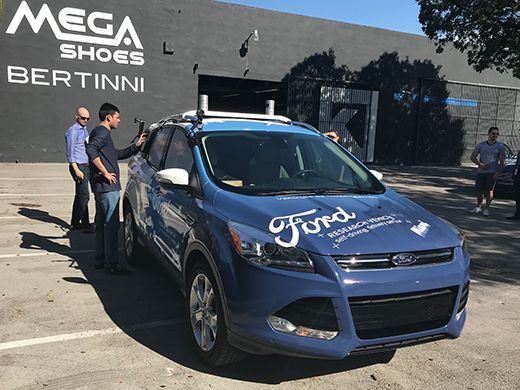Customers and Products > Product Quality and Customer Satisfaction >
Enhancing the User Experience
At Ford, product development always starts with the customer. We look to understand who they are, how they live and what they value in a vehicle. Then, we identify and implement the technologies that will meet their evolving needs and expectations.
Focused on the Customer
We start thinking about people’s lives and experiences years before a new model or service becomes available. Observing customers in their environments and daily lives, as well as imagining our future world, shapes our awareness of the mobility needs of people all over the world. We then use human-centered design to help us create insights and develop new experiences that meet their needs and exceed their expectations.
Our culture of collaboration and continuous improvement means that we can address satisfaction concerns quickly and effectively, and learn from every quality issue.
Making Self-Driving Technology Work for People

We recently started a series of experimental pilots in different cities to help us understand how autonomous vehicles can contribute to people’s daily mobility needs, and what the human element is in a future of automated technology.
Most recently, we tested autonomous delivery services in Miami for their ability to provide desirable and compelling user experiences.
We’re also working closely with Postmates and Dominos on a self-driving delivery vehicle in both Ann Arbor, Michigan and Miami. Our goal is to optimize goods delivery services while staying attuned to the diverse needs of people in contexts like urban centers. While it’s important to streamline the process of delivery, we find people are really passionate about defining how new technologies will shape our world. And that’s what excites us.
With a hyper-collaborative start-up style working model, the Ford-Postmates-Dominos team first envisioned future scenarios and then prototyped experimental vehicles based on core user needs and design-thinking methodologies. Joint teams of researchers, designers and techies then set out to really engage everyday people in making the experience both fun and easy.
Those who opted into the testing could track the delivery vehicle as it headed out with their order, and they received text updates, instructions on what to do and a notification when their order had arrived. At the test vehicle, they used an intuitive keypad to open the container and take their order. Using voice technology, compelling user interfaces and some design intuition, the resulting experience has shown to be delightful to the user and has taught us about the human experience of living among future technologies.
